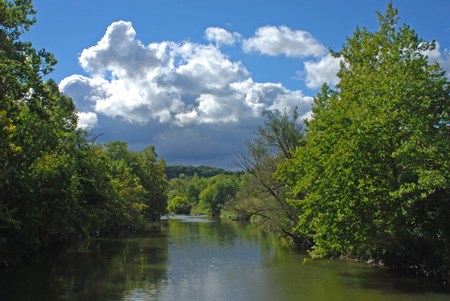
© D.J. Reiser A History of PollutionThe Cuyahoga River winds 100 miles through northeast Ohio. This once pristine waterway drew many people to settle on its banks. Growing communities brought industry from Kent to Cleveland. Companies along the lower river soon began using it as a dumping station for industrial waste. The river quickly fell victim to severe pollution, degrading the water quality and guaranteeing that almost no life could survive in the thick, murky water. A Work in ProgressToday the Cuyahoga River is designated as an American Heritage River because of its role in the environmental movement. The upper 25 miles has excellent water quality and is an Ohio State Scenic River. The lower half is much healthier than it was decades ago, but is still impaired under the Clean Water Act. The section of river from Akron to Cleveland as well as the nearshore of Lake Erie is one of the 43 Great Lakes Areas of Concern. These pollution hotspots are being cleaned up as part of an agreement between the US and Canada. Recreation on the RiverThe water quality of the Cuyahoga River is a concern for water-based recreation. Of particular concern are high concentrations of Escherichia coli (E. coli), a fecal-indicator bacterium, after heavy rain. Park management would like to encourage use of the river when the water quality is within acceptable limits. The river still receives discharges of storm water, combined-sewer overflows, and incompletely disinfected wastewater from urban areas upstream of the park. These discharges result in a threat to the health of visitors who come into contact with river water during recreational use. Because park managers are concerned about the threat posed to human health by sewage and pathogen contamination, the park currently discourages swimming. Kayaking and canoeing are seen as an acceptable recreation activity. Visit our paddling page to learn about recreation on the river. Great Lakes NowCastUSGS Great Lakes NowCast is a system that uses near real-time information to "nowcast" water-quality conditions on the Cuyahoga River. The NowCast issues advisories and predicts the concentrations of E. coli once a day during certain seasons. Visit USGS Great Lakes NowCast for the most recent water quality prediction. |
Last updated: September 1, 2023
